I tried BIAB, then quizzed nail techs for every detail about this long lasting manicure
Your complete guide to BIAB nails, including our beauty editor's review with step-by-step photos
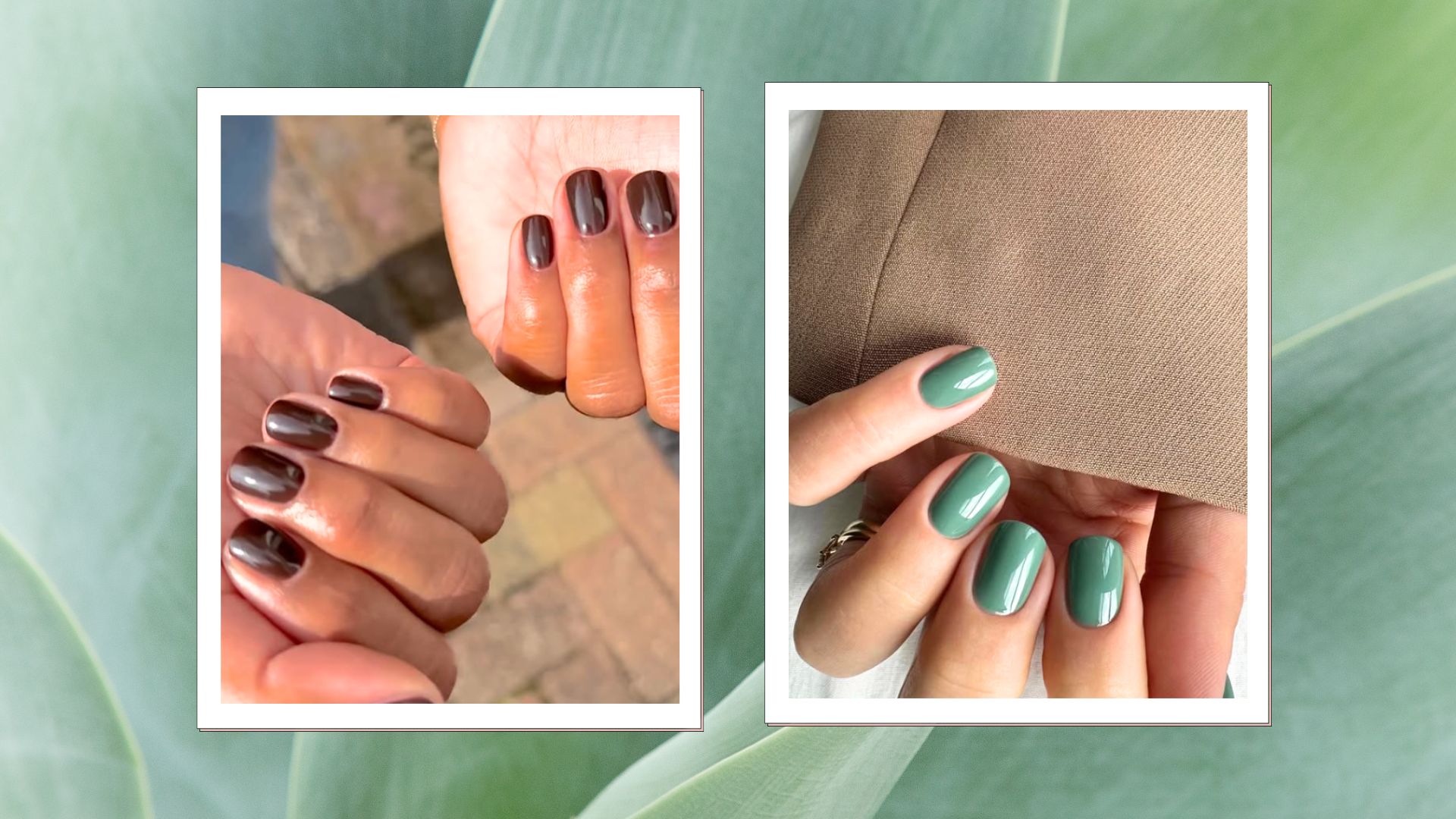

Everyone's talking about BIAB nails, which claim to be a healthier and longer-lasting alternative to gels. So, I tested this 'builder manicure' to see what it involves and whether it's right for you.
So much more than just a 2025 nail trend, BIAB is now an established salon treatment, promising gel-like glossiness with extra staying power. It's also said to be healthier, as the 'builder' gel creates a hard-wearing layer over your natural nails, allowing them to grow.
This is a strong claim, as previously we had to choose between traditional polish, which offers superior care but can chip within days, or durable but potentially nail-knackering options like acrylic nails. If you're debating BIAB vs gels, I booked in to try BIAB and quizzed the experts on what to know before getting BIAB to bring you every detail...
Our beauty editor tried BIAB and quizzed nail experts - these are her findings
Firstly, what is BIAB? "BIAB is a soak-off gel that is harder than regular gel polish," explains Laurie Nicholl, from Lacquered & Stripped Salon.
The Gel Bottle nail expert, Tiffany Abbigaile elaborates, "Builder In A Bottle - aka BIAB - is ideal for creating a strengthening barrier for natural nails." This is one of BIAB's benefits, allowing you to grow long nails instead of having extensions applied.
Looks-wise, expect similarities with gels or Bio Sculpture nails; a smooth, plump nail, albeit in a limited colours. "BIAB usually comes in clear or colours like pink," says Nicholl. Due to BIAB being a thicker gel, a UV lamp would struggle to penetrate pigment-rich shades and cure them properly.
However, if you love a bold shade, you can layer up. "A gel nail colour can be painted directly on top of BIAB, or you can use our BIAB shade range for beautiful nude nails," explains Abbigaile.
Sign up to our free daily email for the latest royal and entertainment news, interesting opinion, expert advice on styling and beauty trends, and no-nonsense guides to the health and wellness questions you want answered.
My BIAB appointment, step-by-step
I booked in with Gabi at Paint Nails to find out what happens at a BIAB appointment. If you've ever had salon Shellac or know how to do gel nails at home, a BIAB appointment will feel familiar.
We began with cuticle work, buffing, and filing the nails. Gabi then cleaned away dust with a nail brush and a wipe of acetone. The BIAB process then began, in six steps:

Beauty channel editor Fiona McKim's BIAB nails, step by step
- Base: A thin layer of BIAB was painted on and cured under a lamp.
- BIAB application: One nail at a time, a thick layer of BIAB colour was applied and worked all over the nail by fanning out the brush.
- BIAB shaping: A fine brush pushed the BIAB into a smooth, plump layer, before curing it under the lamp. Precision is essential to create and cure a perfect shape so it doesn't set unevenly.
- Filing: Once each BIAB nail had been created, my nail tech gently filed and buffed the top of the nails to create a smooth look.
- Finishing: The nail was cleaned to remove oils, and a topcoat was applied and cured. I chose clear, but you can opt for a vibrant gel.
And how long did my BIAB take to apply? Longer than your usual gel mani - I was in the salon for an hour and 15 minutes, so I'd block out 1.5 hours to be safe.
The amount of time the appointment took is probably the only notable downside to BIAB. That aside I was delighted with how they looked - thick, plump and glossy - and the care taken during the appointment on each individual nail. This definitely feels like a more bespoke service than your average gel manicure, and you can see where the extra time and expenditure goes.
How long did my BIAB last?
Up to four weeks is standard, although they can last longer. A fortnight on (and with the addition of gel colour), my BIAB was still 100% perfect, with no chipping or lifting. I opened cans of Coke worry-free and enjoyed the satisfying 'clack' of drumming them on hard surfaces to communicate impatience when the occasion called.
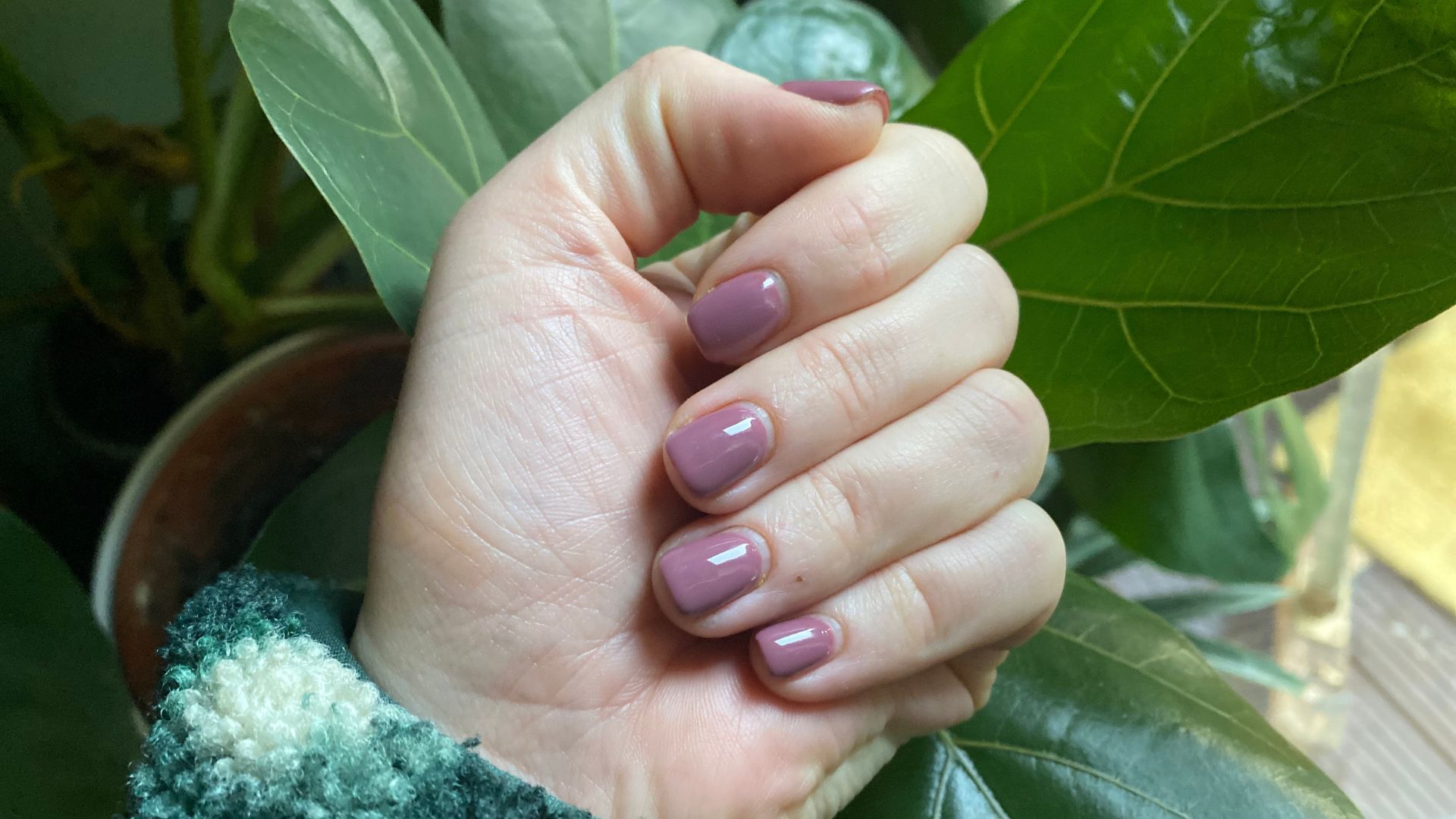
Fiona's BIAB nails after two weeks, with gel colour on top
My BIAB pros & cons
Pros of BIAB:
- Strengthening: This treatment reinforced my nails, allowing them to grow without the risk of breaking.
- Longevity: BIAB can last upwards of four weeks, making it a great option to avoid frequent, harsh gel removal.
- Shine: If you're weighing up BIAB vs Gels, I found BIAB offers a glossier and plumper look that keeps its shine longer than gels.
Cons of BIAB:
- Limited colours: BIAB shades are mostly sheer and neutral, however, BIAB can be combined with bold gel shades.
- Cost: BIAB is usually pricier than gel. Expect to pay around £10-15 over the cost of a normal gel manicure for your first set, the same again for infills and £15 for removal.
What is a BIAB infill?
If you want to make BIAB last longer, you can have an infill at the base of your nail, which tops up the colour and is a key benefit for your natural nails' health. "Since the product can be infilled, it reduces damage to the natural nail caused by removing gel polish," explains Nicholl. It's best to have BIAB infills every 3-4 weeks.
Can you get BIAB on short nails?
Luckily BIAB is adaptable for almost any nail shape and preference, and BIAB on short nails looks just as good as it does on long ones. I am a steadfast short nail wearer, and still love the glossy finish and strength of BIAB on my short nails. However, as one of the main benefits of BIAB is the ability to grow the natural nail, if you don't intend to grow them, it's worth considering whether the extra expense of BIAB is worth it.
Who is BIAB best for?
"BIAB is perfect for clients with weak natural nails who want to grow them out, or clients who want the strength of extensions without the length," explains Nicholl.
"We recommend applying BIAB on natural nails to keep the natural length. For regular gel polish wearers, we recommend switching to BIAB if you find the gel removal process has weakened the natural nail."
However, if you don't fancy spending more than an hour in the salon, or If you get impatient and want to switch up your colour more often than once a month, it might be better to have regular gels instead.
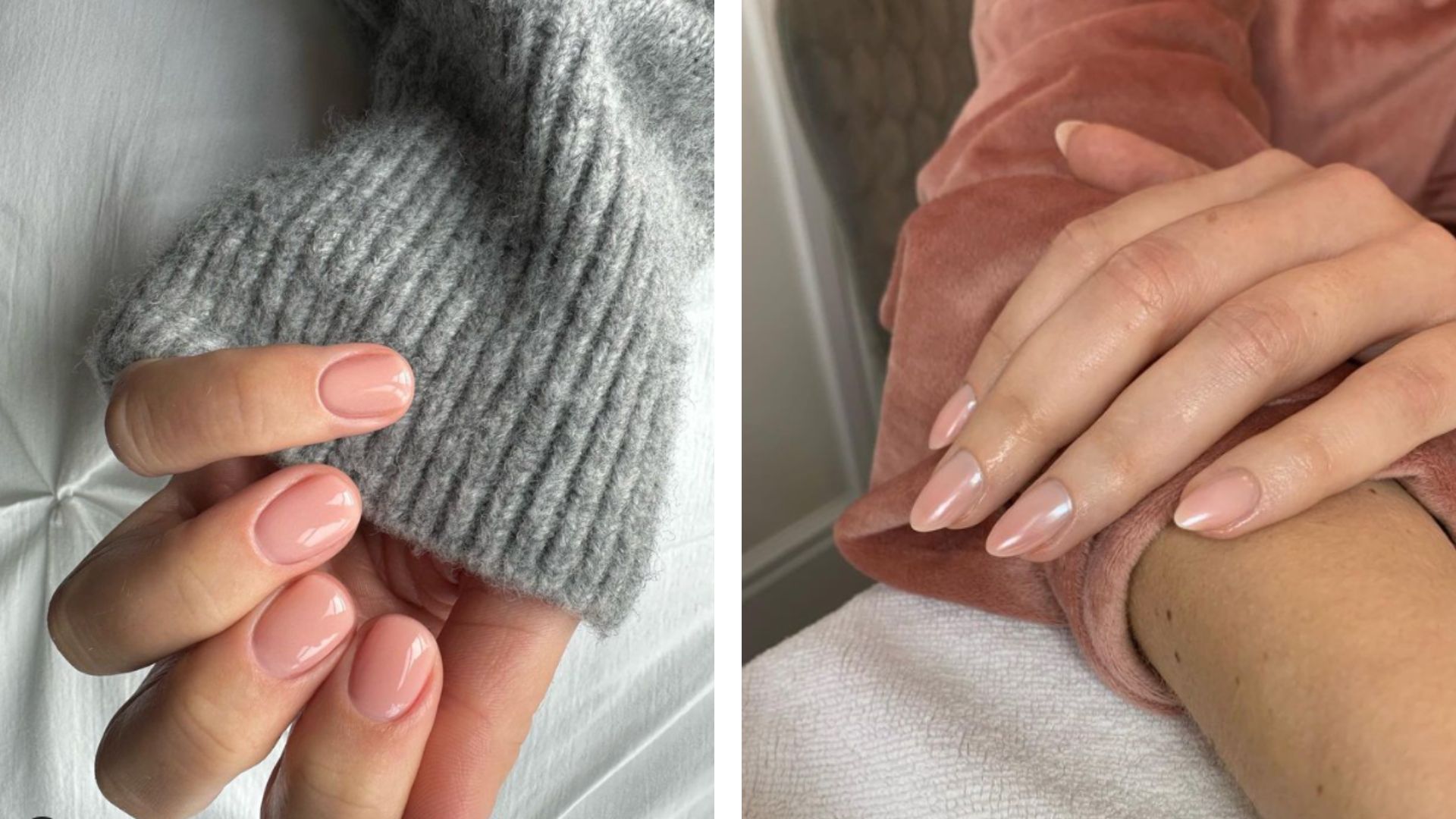
Biab nails created by The Gel Bottle Ambassador Megan Rose
IS BIAB bad for your nails?
In short, no. BIAB works to strengthen the natural nail and prevent breakage or weakness that is typically caused by acrylic extensions or naturally brittle nails. If you are a nail-biter, it will help you to kick that habit too, as BIAB is too strong to bite through. It also won't chip or break, so the nail underneath remains protected and can grow.
Can I do BIAB nails at home?
Technically you can, but only if you're extremely skilled...and patient! BIAB functions much like regular gel polish in terms of prep and method, so is painted on as a base coat that then has to be cured with a UV lamp.
However, due to BIAB's thick and gloopy texture, it can be difficult to control and apply correctly, which is where professional skill is needed. If you want to achieve the look of BIAB but lack a nail tech diploma you could use one of the best at-home gel nail kits to replicate the effect.
Our beauty team recommends...
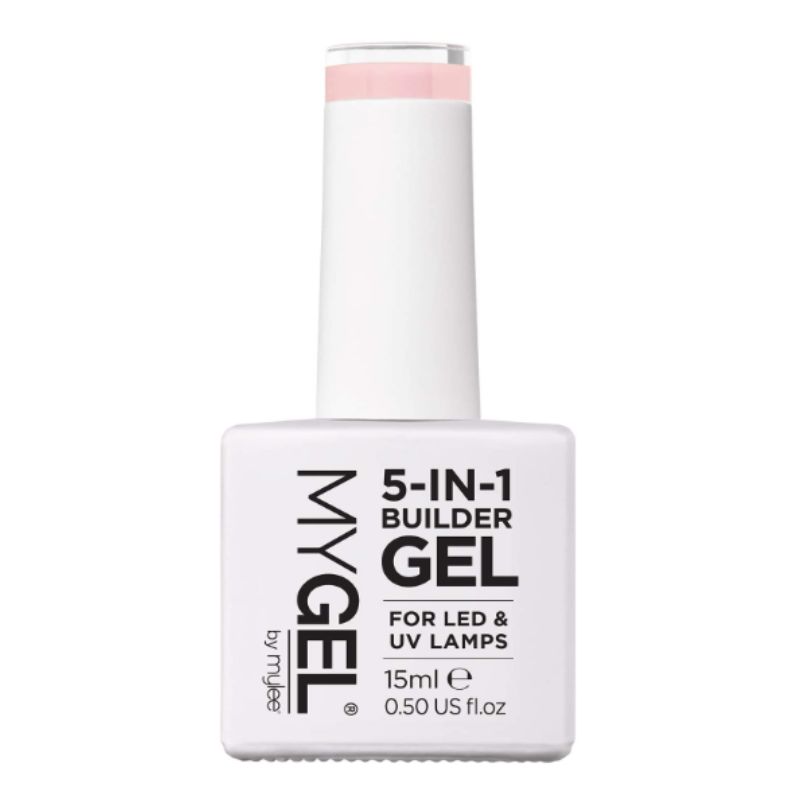
RRP: £13.50
This light pink builder gel dries glossy and will give you a BIAB-like effect in one simple step. Follow with a top coat to set and enjoy long-lasting and strong nails.

RRP: £99.99
For a hard-wearing and glossy effect that's like BIAB, try a gel polish kit. With a lamp, polishes, and remover, this has everything you need.
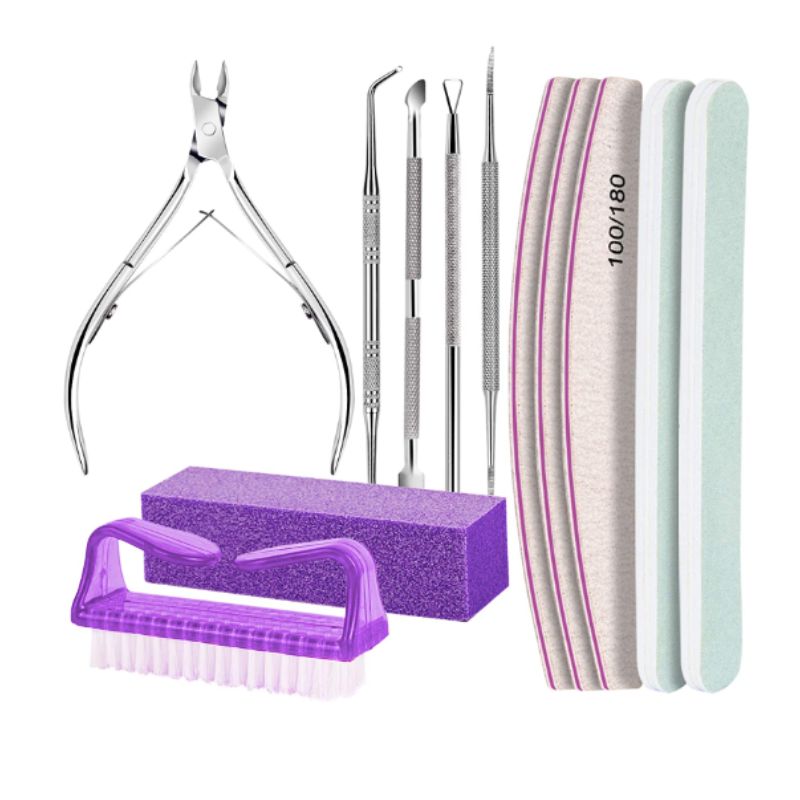
RRP: £6.99
The key to any long-lasting nail polish, especially BIAB, is good nail prep. Buff the surface and tidy your cuticles with this handy set that will help your polish last.
Should you remove BIAB at home?
To be honest, you shouldn't. Every expert we spoke to stressed the importance of professional removal.
"The bulk of the product needs to be removed first by either a nail file or an electric nail file. We will then soak a cotton pad with acetone, place it on the nail, then wrap it with foil," explains Abbigaile. "After a few minutes, the foil can be removed one nail at a time, by gently scraping away the product with a metal cuticle pusher."
This doesn't sound like it would be the healthiest move for your natural nail (ask any expert is acetone bad for your nails, and the reply is a resounding yes), but steps are taken to ameliorate damage. "Once removed, we rehydrate the nail with cream and oil," explains Abbigaile.
BIAB vs Gels: which should I pick?
woman&home Beauty Ecommerce Editor, Aleesha Badkar, swapped gel manicures for BIAB to help you compare:
"My regular gel nails would get scratches and chips, and during gel breaks, my (usually strong and fast-growing) nails would be weak and struggle to grow past the fingertip. I thought BIAB might be worth a try, as it could be added to each time, without the need for removal."
"Boy, was I right. Five months of regular BIAB manicures left me with faultless nails that boast shine, polish and a whole lot of strength. Not only did BIAB stop my nails from cracking, but my nails grew faster than they would naturally.
BIAB manicures don't require breaks thanks to the protein in the formula, but I'm now a month into a break, and my nails are making it towards a healthy length - unseen during a gel break. Call me an official BIAB convert."
BIAB vs Acrylic: which is better?
In terms of nail health, BIAB is a better alternative to acrylic as it provides increased strength without compromising the natural nail. When it comes to extensions, "BIAB can be applied on acrylic or UV Gel extensions; however, it won’t enhance the result of the extensions. With BIAB, you can do very short extensions, but they usually need to be done with tips, not sculpting," explains Nicholl.
Alternatively, if you want to work on growing your natural nails and eliminate extensions, BIAB could be the answer. If you are consistent with BIAB and get regular infills, it won't take long for your natural nails to grow long and healthy.
Our expert panel

Aleesha is Beauty Ecommerce Editor at woman&home, where she gets to share her expertise into all the best techniques, sharpest tools and newest products - with a particular savvy in skincare and fragrance. With years of beauty product testing experience, she always knows what to recommend.

As woman&home's beauty channel editor, Fiona Mckim loves to share her 15+ years of industry intel and treatment testing. As a short nail wearer, Fiona believes manicures should be flattering for all nail lengths without knackering the nails - and has tested everything from Bio Sculpture to BIAB to find the perfect mani.
Where to find BIAB near you
If you like the sound of BIAB and are keen to try the service for yourself, it is currently available at selected The Gel Bottle partner salons nationwide. The best way to find one is to check your local nail bar on Treatwell (UK). We also round up the latest Treatwell discount codes each month to help you find money off your next appointment.

As woman&home's Beauty Channel Editor, Fiona Mckim loves to share her 15+ years of industry intel on womanandhome.com and Instagram (@fionamckim if you like hair experiments and cute shih-tzus). After interning at ELLE, Fiona joined woman&home as Assistant Beauty Editor in 2013 under industry legend Jo GB, who taught her to understand ingredients and take a cynical approach to marketing claims. She has since covered every corner of the industry, interviewing dermatologists and celebrities from Davina McCall to Dame Joan Collins, reporting backstage at London Fashion Week and judging the w&h Beauty Awards.
- Naomi JamiesonDigital Beauty Writer
- Aleesha BadkarBeauty eComm Editor, woman&home